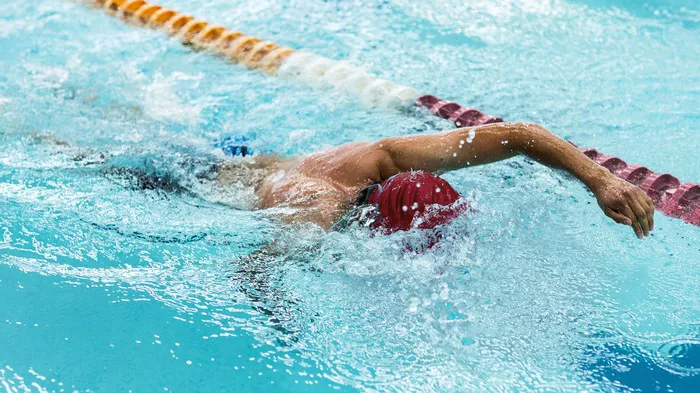Mastering the Art of Swimming: A Comprehensive Guide to Proper Leg Movement
Swimming is not merely a recreational activity; it is a skill that, when mastered, can provide both physical fitness and pleasure. Among the fundamental components of efficient swimming technique is proper leg movement. While the arms play a significant role in propulsion, the legs provide stability, balance, and additional propulsion. In this comprehensive guide, we delve into the nuances of leg movement in swimming, offering insights and techniques to enhance your swimming prowess.
Understanding the Role of Legs in Swimming
Before delving into specific techniques, it’s crucial to understand the role of legs in swimming. While the arms primarily drive propulsion, the legs serve multiple functions:
Stability and Balance: The legs help maintain stability and balance in the water, preventing excessive rotation and ensuring streamlined movement.
Propulsion: Although the legs contribute less to propulsion compared to the arms, proper leg movement can augment forward momentum, especially during certain strokes such as the breaststroke and flutter kick in freestyle and backstroke.
Body Position: Effective leg movement assists in maintaining the correct body position, keeping the body horizontal and reducing drag.
Key Techniques for Efficient Leg Movement
1. Flutter Kick:
The flutter kick is the foundation of leg movement in freestyle and backstroke. To perform a proficient flutter kick:
Positioning: Lie flat on your stomach or back with your body stretched out and your legs parallel to the water surface.
Kick Rhythm: Initiate a fluttering motion by flexing your ankles slightly and kicking from the hips, keeping your legs relatively straight.
Frequency and Amplitude: Aim for a rapid, continuous fluttering motion with small, controlled movements. Avoid excessive splashing or wide kicks, as they increase drag.
Coordination: Coordinate your kick with your arm strokes, ensuring a smooth, rhythmic motion that maximizes propulsion.
2. Breaststroke Kick:
The breaststroke kick is characterized by its circular motion and is crucial for propulsion in breaststroke. Here’s how to execute it effectively:
Starting Position: Begin with your legs extended behind you and your arms extended forward.
Kick Execution: Simultaneously bend your knees and bring your heels towards your buttocks while turning your toes outward. As your knees reach the chest, forcefully extend your legs outward and together in a circular motion.
Timing: Coordinate the kick with your arm movements, initiating the kick as your arms complete the pull phase and beginning the recovery phase as your arms extend forward.
Breathing: Exhale steadily during the glide phase of the kick and inhale during the arm pull to maintain a smooth breathing pattern.
3. Dolphin Kick:
The dolphin kick, commonly used in butterfly and underwater propulsion, requires coordination and core strength. Follow these steps for an effective dolphin kick:
Body Position: Start in a streamlined position with your arms extended forward and your body straight.
Kick Execution: Initiate the kick from your core muscles, undulating your body in a wave-like motion from hips to toes. Bend your knees slightly and propel your legs downward and then upward in a fluid motion.
Timing: Coordinate the kick with your arm movements, executing the kick as your arms pull underwater and utilizing the upward kick to assist in the recovery phase.
Core Engagement: Maintain a strong core throughout the kick to maximize propulsion and minimize resistance.
Drills and Exercises for Improving Leg Movement
In addition to mastering the techniques mentioned above, incorporating specific drills and exercises into your training regimen can help enhance your leg movement in swimming:
Kickboard Drills: Utilize a kickboard to isolate your leg movements and focus on technique. Perform sets of flutter kick, breaststroke kick, or dolphin kick while holding onto the kickboard for buoyancy and support.
Vertical Kicking: Practice vertical kicking drills to improve leg strength and coordination. Tread water in an upright position and perform flutter kicks or breaststroke kicks while keeping your head above water. This drill simulates the resistance experienced during swimming and enhances endurance.
Underwater Streamline Kicking: Practice streamline kicking drills underwater to improve streamline position and kicking efficiency. Push off from the wall in a streamlined position and perform flutter kicks or dolphin kicks while maintaining a tight, streamlined body position.
Resistance Training: Incorporate resistance training tools such as swim parachutes or drag socks into your workouts to increase leg strength and power. These tools create additional resistance, requiring greater effort from your leg muscles during kicking exercises.
Interval Training: Incorporate interval training sets into your workouts to improve both speed and endurance. Alternate between periods of maximum effort kicking and recovery intervals to simulate race conditions and improve overall performance.
Conclusion
Mastering proper leg movement is essential for achieving efficiency, speed, and endurance in swimming. By understanding the role of legs in propulsion, stability, and body position, and by honing fundamental techniques such as flutter kick, breaststroke kick, and dolphin kick, swimmers can enhance their overall performance in the water. Incorporating specific drills and exercises into training regimens further reinforces these skills, leading to improved swimming proficiency and enjoyment. With dedication, practice, and attention to detail, anyone can become a proficient swimmer with fluid and powerful leg movement.

